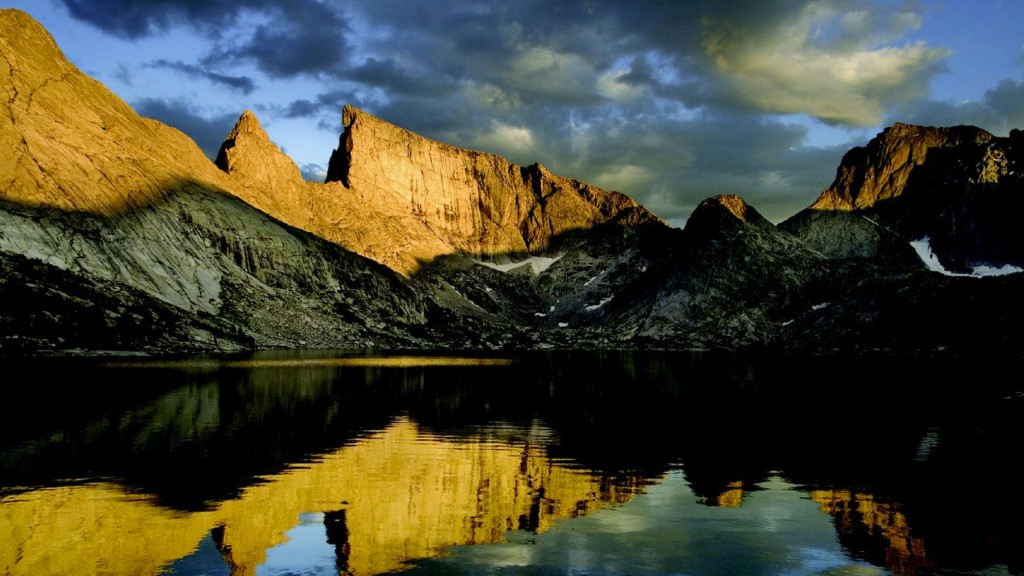Water is Life
I was fortunate to grow up on the banks of Trout Creek, one of the many streams winding its way out of the Wind River Mountains onto mile-high flatlands and eventually to the lower elevations of the Big Wind River, if you consider 4,000 to 5,000 feet to be low. This part of the country, about 200 miles south of Yellowstone National Park, shares the same mountain range, wildlife, climate, biology, and ecology with that famous area. The Wind River Indian Reservation even has one or two thermal hot springs.

Trout Creek starts as a brook a foot wide, high up in the Wind Rivers, but as it reaches the Little Wind River (tributary to the Big Wind River) it widens to 20 feet or more thanks to the many underground springs that flow to it. These springs make for vibrant trout habitat. The subsurface springs feeding the creek always fascinated me as a youth, because they expanded the life-sustaining source of water beyond the stream and its aquatic inhabitants to reach into the riparian areas and wetlands and their inhabitants.
My parents, both of whom were subject to government boarding schools and lived through the Depression, spoke Shoshone as their first language. It was told to them by their elders and relayed to me, my siblings and our children on cool summer or cold winter nights over hot cups of coffee. My parents’ stories gave me a glimpse of what life may have been like centuries ago. Listening to them, I gathered that surviving day to day was not easy when existence depended on the abundance or lack of wildlife, berries, vegetables, and plants—all totally dependent on the life-giving element of water.
I often imagined, while roaming or fishing this lush riparian area and encountering the many crawly critters—fowl to moose and everything in between—what life for my Shoshone ancestors was like decades or even eons ago. This region where the sagebrush plains begin and water-dependent vegetation ends is clearly distinct. Looking out to the dusty plains from the lush foothills with their shrubs, berries and water-guzzling cottonwoods, one thing was always apparent: water is essential for all life to exist.
The thirsty cottonwoods, used as the center pole in a round Sun Dance lodge, symbolize extending the gift of life, of water. Many of the religions practiced today by the Shoshone, Arapaho, and other tribes in the surrounding states share in common water as their focal point. The Sun Dance participants, after days of fasting, gain a whole new respect for water. At the culmination of this ceremony, water is blessed and praised for its life-giving qualities. The sweat lodge, a purification rite, depends on the scorching steam produced by water poured over hot rocks. The Native American church ceremonies also end with praises, blessings, and reverences to the life-giving qualities of water. With water as the focal point, these ceremonies are performed in concert and orientation with an equally important element: the sun. At sunrise, a woman brings water in to be blessed. She and the water are both bearers of life, as is the sun. These are not random acts, but there is a purpose and meaning rooted over the many hundreds of years in each ceremony.
Today the agricultural use of water stretches the boundaries of this arid region. Limited only by dollars to construct new irrigation infrastructure and laws governing the use of the water, the arid land produces. We take for granted our water, much less the fact that we owe our existence to it. We consider any water service disruption or overabundance an inconvenience. Whether you believe that global warming is human caused or not, local droughts are intensifying. How do we plan for more intense and frequent erratic weather and rising global temperatures? The impact on the local climate will be anyone’s guess. With such uncertainty, our attitudes will have to follow those of the early inhabitants who instilled in their ceremonies the idea that water is not a right that should be taken for granted. Instead, it is a precious gift given and received with humble gratitude and no guarantees for how long it will remain.
By Baptiste Weed
Baptiste Weed was born and raised on the Wind River Indian Reservation, where he has worked on water issues for twenty-five years. He is currently the Deputy Tribal Water Engineer.


